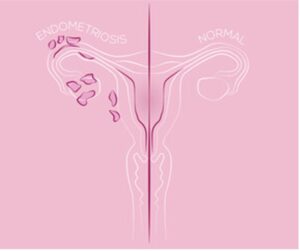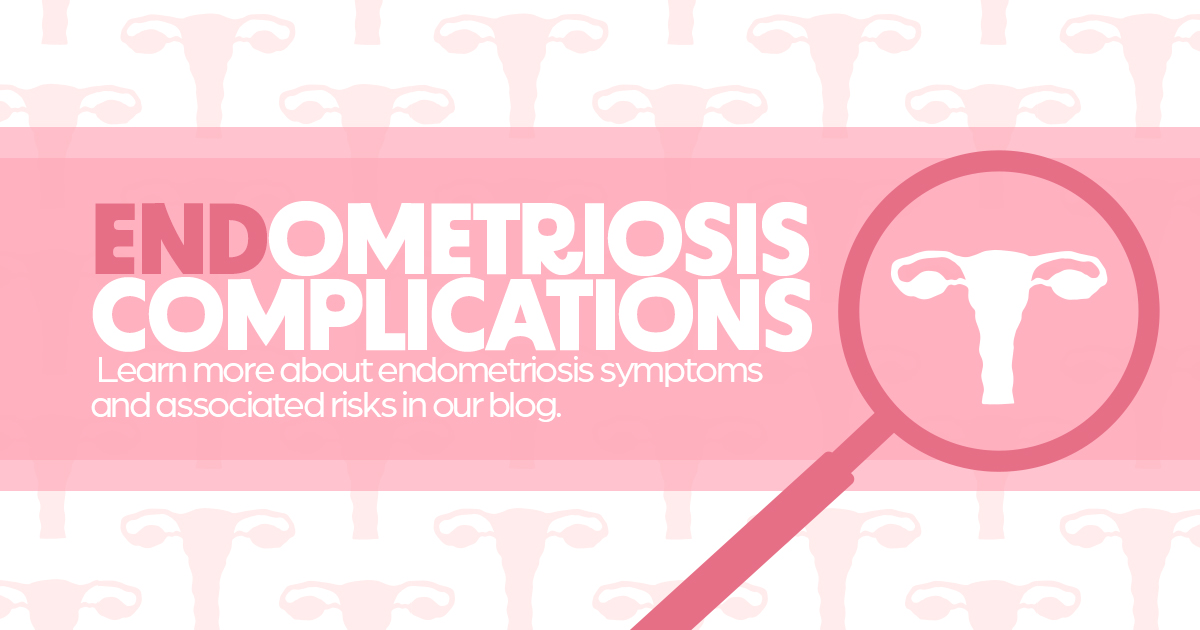Endometriosis is a painful condition that affects one in ten women worldwide, yet many remain unaware. While a new diagnosis can be scary at first, the condition doesn’t need to dictate your life. In our latest blog, let’s get educated together as we discuss what it is, the symptoms, and the effects of endometriosis when left untreated.
Endometriosis Explained
Endometriosis is a common and uncomfortable condition affecting millions of women worldwide. It’s a disorder in which tissue similar to the uterine lining grows outside the uterus, most commonly on organs in the pelvic area, such as the ovaries. The endometrial tissue behaves as it would in the uterus: thickening, breaking down, and bleeding each month during a woman’s menstrual cycle. Endometriosis affects women of all ages; however, it typically begins shortly after puberty, and is commonly diagnosed in women who are in their 30s and 40s. . While there is currently no cure for endometriosis, treatment options are available to help ease symptoms.

How to Diagnose Endometriosis
Endometriosis is known to be quite tricky to diagnose as its symptoms are often rather generic and can be misattributed to other ailments. The key to diagnosis is to be aware of the signs and speak up if you think something isn’t right. Common symptoms of endometriosis include:
- Abdominal bloating and cramping
- Chronic pelvic pain
- Heavy menstrual bleeding
- Fatigue and nausea
- Pain during intercourse
- Painful bowel movement or urination
Luckily there are a few common ways to determine if this condition is present. Your doctor will likely perform a pelvic exam and take detailed notes of your previous medical history. In some cases, imaging tests such as ultrasound may be conducted to assess cysts or other growths in the reproductive area. If further confirmation is needed, a laparoscopy may be performed. This surgical procedure involves inserting instruments through minor incisions near the belly button to check for signs of endometriosis. While it takes time to get an accurate diagnosis, seeking medical care is essential for proper treatment.
Risk Factors of Endometriosis
While endometriosis is a common condition, its complications are often under-discussed. The effects of endometriosis on the body vary from overly painful menstrual cycles that last more than seven days or more severe outcomes. For example, when not treated correctly or on time, endometriosis can lead to the formation of scar tissue or cysts on the ovaries and other organs in the pelvis and abdomen. It can also affect fertility by damaging fallopian tubes, leading to issues with conception or carrying a pregnancy to term. Women with endometriosis are also at increased risk for ovarian cancer, making early detection essential. These issues can drastically affect a woman’s quality of life. Taking proactive steps toward avoiding endometriosis-related complications will allow those who experience the disorder to enjoy better health and well-being.

There’s only so much a heating pad and painkillers can do. Join the fight against endometriosis pain and consider taking part in enrolling studies! Learn more by visiting Seattle Clinical Research Center online or contacting us at (206) 522- 3330 extension 2 today!
Resources:
https://www.plannedparenthood.org/learn/health-and-wellness/endometriosis
https://www.womenshealth.gov/a-z-topics/endometriosis
https://www.nichd.nih.gov/health/topics/endometri/conditioninfo/at-risk


